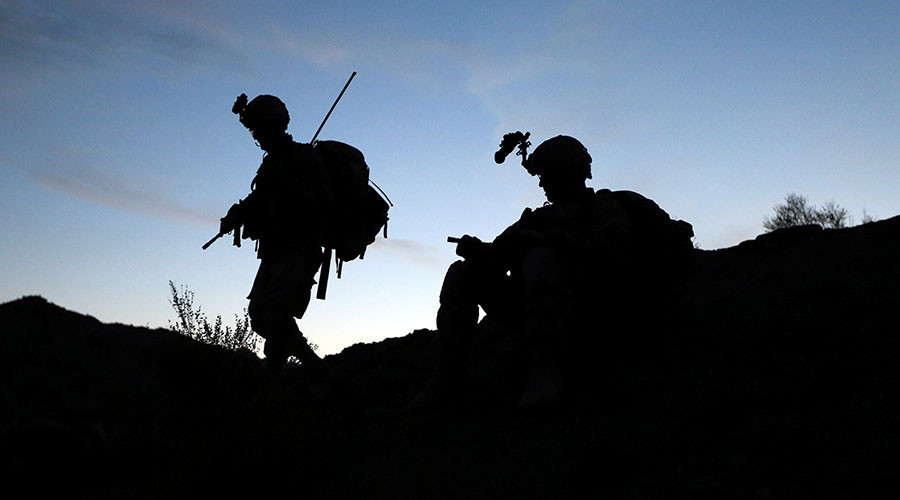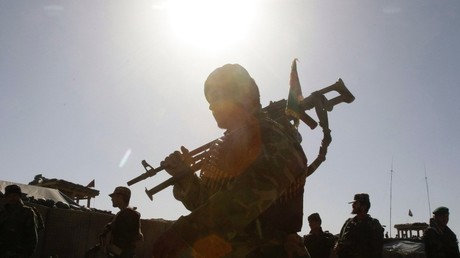No end in sight: US leaders’ broken promises on Afghanistan

With President Donald Trump’s new strategy, America’s longest-ever war promises to stretch on indefinitely, despite pledges by previous administrations and by Trump himself to withdraw from Afghanistan.
“Conditions on the ground – not arbitrary timetables – will guide our strategy from now on. America’s enemies must never know our plans or believe they can wait us out,” Trump said Monday, as he announced his administration’s strategy on Afghanistan.
This was a far cry from Trump’s own words in the past, where as a candidate and as a private citizen he called on US leaders to “get out” of Afghanistan.
“Decisions are much different when you sit behind the desk in the Oval Office,” Trump said Monday, acknowledging a change of mind.
From now on, the president said, he will not “talk about numbers of troops or our plans for further military activities” so as to keep the enemies guessing.
Following Trump's announcement, however, US Defense Secretary James Mattis released a statement saying he “will be in consultation with the Secretary General of NATO and our allies – several of which have also committed to increasing their troop numbers. Together, we will assist the Afghan Security forces to destroy the terrorist hub.”
Around 9,000 American troops are currently deployed in Afghanistan on a mission to train, advise and assist the Afghan forces. US military leaders have suggested adding at least 4,000 more.
“That’s not going to make much difference compared to the much larger number of troops we had there years ago, which did not obviously solve the problem and find some way to get us out of there,” former US diplomat Jim Jatras said, speaking to RT.
Bush’s war
The war in Afghanistan began as a response to the country’s harboring of Al-Qaeda after the 9/11 terrorist attacks in 2001. Within a month, the US military bombed the terrorist group’s hubs and training camps in Afghanistan and its members went on the run.
By the end of 2001, the Taliban was overthrown and an interim government was created.
The war then morphed into a fight against the local Taliban to prevent them from regaining power. The US increased troop levels by the thousands each year, reaching 30,000 in 2006.
The war then morphed into a fight against the local Taliban to prevent them from regaining power. The US increased troop levels by the thousands each year, reaching 30,000 in 2006.
Despite George W. Bush’s initial promises of a quick win in Afghanistan, his Joint Chiefs of Staff Admiral Mike Mullen conceded in 2008, “I’m not sure we’re winning.”
Obama’s war
When President Obama took office in 2009, he promptly escalated the war in Afghanistan by ordering 21,000 more American soldiers into the country. By 2010, he brought the number of US troops there up to 100,000, while saying that the US would begin pulling out forces in 2011.
In May 2011, a small US special operations team killed Osama bin Laden in Pakistan.
Former Afghan President Hamid Karzai refused to sign a security agreement with the US that would grant American forces legal immunity in the country, and president Obama pledged to withdraw the troops completely by end of 2016.
In 2014, the new Afghan president, Ashraf Ghani, signed a security agreement allowing American troops to stay. President Obama later backtracked on his promise to withdraw all troops from the country, leaving behind nearly 9,000 soldiers at the end of his presidency.
A US drone strike in May 2016 killed Afghan Taliban leader Mullah Akhtar Mansour who was driving in a taxi in Pakistan. While Washington hailed the killing of Mansour, who was said to be hampering the peace process, Pakistan condemned the “illegal” strike, saying that it derailed the peace talks for good.
Trump’s war
When Trump took office, the Taliban controlled more territory than they did at any time since 2001 and Islamic State terrorist group (formerly known as ISIL/ISIS) already had a foothold in eastern Afghanistan.
While his administration was coming up with a strategy of its own, US Defense Secretary James Mattis admitted in June, “We are not winning in Afghanistan right now.”
Trump was reported to have echoed this conclusion at a July meeting with US military leaders.
By the beginning of August, the US-backed government in Kabul controlled about 60 percent of the country – down from 65 percent the same time last year, according to the US military headquarters in Kabul. Trump called it a mess.
By the beginning of August, the US-backed government in Kabul controlled about 60 percent of the country – down from 65 percent the same time last year, according to the US military headquarters in Kabul. Trump called it a mess.
Meanwhile, the Taliban was gaining ground. The militants seized control of a key area in Afghanistan’s northern Sari Pul province.
Earlier this summer, they raided and seized the district of Jani Khel in Paktia province, south of Kabul. The fall of Jani Khel marked their third victory in just four days.
The $8.5 billion the US spent on counter-narcotics efforts “failed to prevent Afghan opium production from setting new records,” according to the Special Inspector General for Afghanistan Reconstruction (SIGAR).
The Taliban receive 60 percent of their funding from the opium trade, according to US forces commander General John Nicholson.
Estimated opium production in Afghanistan has increased nearly 25 times since 2001, reaching 4,800 tons last year, according to the UN.
‘Jihad will go on’
“As long as there is even one American soldier in our country,” the Islamist insurgents would “continue jihad,” Taliban spokesman Zabihullah Mujahid said hours after Trump’s speech on Monday, according to Reuters.
“Previous experiences have shown that sending more troops to Afghanistan will not result in anything other than further destruction of [America’s] military and economic might,” the Taliban said earlier in August.
Nearly 2,400 US soldiers have died in the war. Afghan civilians have been hit the hardest – some 1,662 were killed in the first half of 2017 alone, according to a mid-year report by UN Assistance Mission in Afghanistan (UNAMA).
Deaths of Afghan security forces in the early months of 2017 were “shockingly high,” SIGAR reported in April, saying 807 were killed.
The US is estimated to have spent over $700 billion on military assistance, reconstruction and economic aid to Afghanistan in the past 17 years.
It is by far the longest war the US has been involved in.






0 Comments:
Post a Comment
Subscribe to Post Comments [Atom]
<< Home